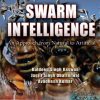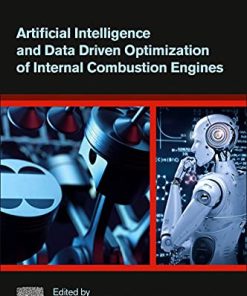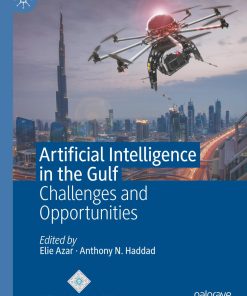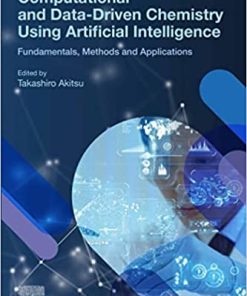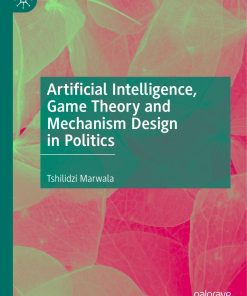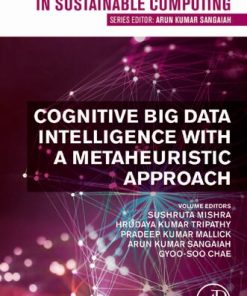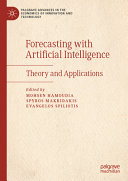Artificial Intelligence and Data Science in Environmental Sensing 1st edition by Mohsen Asadnia 0323905072 9780323905077
$50.00 Original price was: $50.00.$25.00Current price is: $25.00.
Artificial Intelligence and Data Science in Environmental Sensing 1st edition by Mohsen Asadnia – Ebook PDF Instant Download/DeliveryISBN: 0323905072, 9780323905077
Full download Artificial Intelligence and Data Science in Environmental Sensing 1st edition after payment.
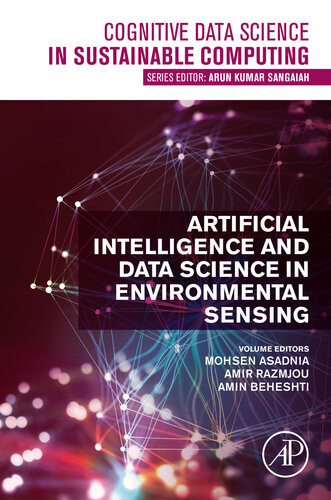
Product details:
ISBN-10 : 0323905072
ISBN-13 : 9780323905077
Author : Mohsen Asadnia
Artificial Intelligence and Data Science in Environmental Sensing provides state-of-the-art information on the inexpensive mass-produced sensors that are used as inputs to artificial intelligence systems. The book discusses the advances of AI and Machine Learning technologies in material design for environmental areas. It is an excellent resource for researchers and professionals who work in the field of data processing, artificial intelligence sensors and environmental applications.
Artificial Intelligence and Data Science in Environmental Sensing 1st Table of contents:
Chapter 1. Smart sensing technologies for wastewater treatment plants
1. Introduction
2. Online estimation
3. Fault detection and diagnostics
4. Multivariate analysis models
5. Conclusion and future direction
Chapter 2. Advancements and artificial intelligence approaches in antennas for environmental sensing
1. Printed antennas for wireless sensor networks
2. Printed antenna sensors for material characterization
3. Epidermal antenna for unobtrusive human-centric wireless communications and sensing
4. Artificial intelligence in antenna design
Chapter 3. Intelligent geo-sensing for moving toward smart, resilient, low emission, and less carbon transport
1. Introduction
2. The role of transport in the economy and environment
3. Geo-sensing; evolution in the geography
4. Geographic Information System as a revolution or/and an evolution
5. Geo-sensing for moving toward eco-routing and low-emission transport
6. Intelligent geo-sensing and AI as a new window to the future
7. Conclusion
Chapter 4. Language of response surface methodology as an experimental strategy for electrochemical wastewater treatment process optimization
1. Introduction
2. Strategy of response surface methodology
3. Practical application of RSM in electrochemical processes for wastewater treatment
4. Merits and demerits of RSM
5. Conclusions
Chapter 5. Artificial intelligence and sustainability: solutions to social and environmental challenges
1. Introduction
2. AI and social change: the case of food and garden waste management
3. AI and ecosystem services: insights into bushfire management and renewable energy production
4. Challenges of using AI to achieve sustainability
5. Implications and conclusion
Chapter 6. Application of multi-criteria decision-making tools for a site analysis of offshore wind turbines
1. Decision-making in renewable energy investments
2. Decision-making tools on the development and design of offshore wind power farms
3. Background of multiattribute decision-making tools
4. Background of multiobjective problems in offshore and wind farms
Chapter 7. Recent advances of image processing techniques in agriculture
1. Introduction
2. Application in plants detection
3. Application in livestock recognition
4. Application in fruits and vegetables recognition
5. Conclusion
Chapter 8. Tuning swarm behavior for environmental sensing tasks represented as coverage problems
1. Introduction
2. Preliminaries
3. System design: swarming for coverage tasks
4. Experimental analysis
5. Conclusions and future work
Appendix
Chapter 9. Machine learning applications for developing sustainable construction materials
1. Introduction
2. Prediction
3. Damage segmentation and detection
4. Mixture design
5. Multiobjective optimization
6. Conclusions
Chapter 10. The AI-assisted removal and sensor-based detection of contaminants in the aquatic environment
1. Introduction
2. AI-assisted techniques for PFAS detection and removal
3. Sensors for detection of PFAS
4. Biosensors
5. Disinfection by-products
6. AI-assisted techniques for removal of heavy metal
Chapter 11. Recent progress in biosensors for wastewater monitoring and surveillance
1. Introduction
2. Principles and working of BES as a biosensor
3. Biosensor for various pollutant monitoring
4. Photoelectrochemical biosensors
5. Biosensors as a perspective to monitor infectious disease outbreak
6. Conclusions, future trends, and prospective of biosensors
Chapter 12. Machine learning in surface plasmon resonance for environmental monitoring
1. Introduction
2. Surface plasmon resonance
3. Environmental hazard monitoring by SPR
4. Machine learning algorithms in SPR
5. Applications of ML in SPR
6. Conclusion and future perspectives
People also search for Artificial Intelligence and Data Science in Environmental Sensing 1st:
b tech artificial intelligence and data science
b tech artificial intelligence and data science syllabus pdf
bsc artificial intelligence and data science
b tech artificial intelligence and data science salary per month
b tech artificial intelligence and data science colleges
Tags: Artificial Intelligence, Data Science, Environmental Sensing, Mohsen Asadnia
You may also like…
Computers - Artificial Intelligence (AI)
Computers - Artificial Intelligence (AI)
Business & Economics - Management & Leadership
Politics & Philosophy - Philosophical Positions & Movements
Computers - Artificial Intelligence (AI)
Artificial Intelligence in the Gulf: Challenges and Opportunities Elie Azar
Chemistry - Physical Chemistry
Politics & Philosophy - International Relations
Artificial Intelligence, Game Theory and Mechanism Design in International Politics
Computers - Artificial Intelligence (AI)
Forecasting with Artificial Intelligence: Theory and Applications


